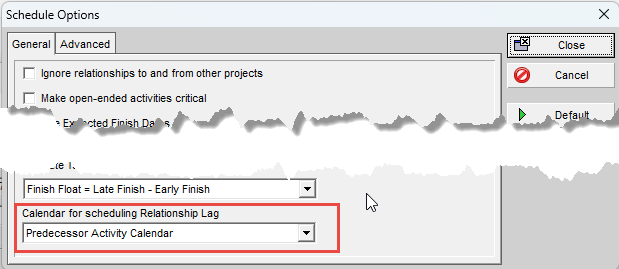TABLE OF CONTENTS
- Introduction
- Issues when transferring data from Safran to P6
- Issues when transferring data from P6 to Safran
Introduction
The concept of "interoperability" is the shining star that IDE is guided by...
However, there are some edge cases when exchanging data across Host Systems is like "a square peg meeting a round hole"...
This document is an attempt at pointing out some of these cases that makes the idea of "perfect interoperability" unattainable - due to the simple fact that one Host System has a different architecture and logic than another. This document will focus on the systems P6 and Safran to outline some areas of incongruence, as well as inform of some behaviors of IDE (relative to Safran and P6) that may be useful to know about.
Issues when transferring data from Safran to P6
Resource Calendars exist in P6 but not in Safran
Leading question:
What will happen when a resource is created in P6 from Safran? What calendar will it be assigned? Answer: Since a resource in P6 has a calendar assigned to it, and Safran does not - the P6 calendar will be automatically assigned the Global Calendar marked as "Default" (which is an arbitrary setting in the receiving schedule - i.e not controllable by IDE):

How IDE creates resources in P6
There is a special node in the Resource "tree" called "ILAP" that acts as the parent for all created resouces. Format of name:
<The first 10 characters from Schedule name>-<First 9 characters from GUID> (in order to limit the name to 20 characters)
 As mentioned, the newly added Resource will automatically be assigned the default Global calendar (see red frame at lower right).
As mentioned, the newly added Resource will automatically be assigned the default Global calendar (see red frame at lower right).
Lag on a P6 link transferred to Safran - a solvable issue
Below is a screenshot in P6 showing "lag" for a link:

The number 5.0 does not mean "the physical number of days to add to the start date of the activity's start", but it means "the number of working days to wait relative the activity's start"!
In other words: The scheduling engine needs to interpret this number in light of the associated calendar (one calendar may imply that our 5 work days becomes 7 calendar days and another may imply it becomes 25 days, depending on its defined "non-work" days)


Screenshot showing that P6 has a setting that controls which calendar will be used for a link.
In P6 this is defined by a setting for the schedule engine (see above), where typically either the Predecessor Activity's calendar is used, or the Successor Activity's (i.e the 2 topmost choices).
In Safran, however, each link can be assigned its own individual calendar.
When uploading a schedule from P6, IDE therefore looks at this setting and assigns the link calendar accordingly (i.e uses either the Predecessor of Successor activity's calendar).
Then the download into Safran will then have individual calendars for each link, matching the calendars used in P6 - so no problem exists.
The other direction, however, where a link calendar from Safran is transferred to P6, is in fact a different matter, where no logical solution exists. See article below for details.
Issues when transferring data from P6 to Safran
Lag on a Safran link transferred to P6 - a non-solvable issue(!)
As each link in Safran has its individual calendar, and P6 does not - it can only reference its predecessor OR successor activity's calendar, according to setting (see screenshot in previous article).
Therefore we are at a "round hole meets a square peg - situation" - There is no way to ensure that the link's calendar will be the same in P6 as in Safran... period.
However, we can "mitigate" the impact of this "impossibility", so that the result of the scheduling engines will end up with more or less the same result (early start and finish dates). This is done by giving the option (HSP in config and IEA) of "Adjust Safran Lags" on download to P6 (see separate article).

Task dependent activities vs Resource dependent activities
What calendar will be used for an activity and resource assignment when schedule transferred from P6 to Safran.
If activity is "Task Dependent":
The task calendar is used for all underlying Resource Assignments - i.e they will all have the P6 activity's calendar, even if the resource dictates a different calendar.
If activity is "Resource Dependent":
The Resource Assignments will get the calendar dictated by its resource.
Was this article helpful?
That’s Great!
Thank you for your feedback
Sorry! We couldn't be helpful
Thank you for your feedback
Feedback sent
We appreciate your effort and will try to fix the article